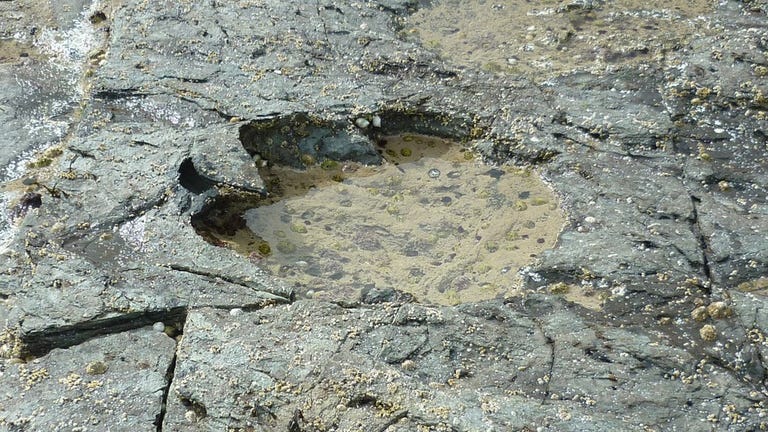Dozens of Pristine Dino Footprints Found on Island in Scotland
Of the roughly 50 prints found, some were so detailed as to show claws.
By Eric Limer
JON HOAD/EDINBURGH UNIVERSITY
Researchers have discovered a collection of around 50 dinosaur footprints on the Isle of Skye in Scotland. They date back to the Middle Jurassic period (about 174 to 163 million years ago), from which there is a dearth of fossils to study. In addition to their uncommon age, some of the prints are particularly detailed and well-preserved, showing clear outlines and even the presence of claws.
The findings are published in the Scottish Journal of Geology and are not the first instance of footprints found on the Scottish island. Different footprints had been found three years earlier, ones that date back 170 million years and survived as evidence of giant sauropods–likely ancestors of the later brontosaurus–that would wander through the isle's lagoons. These newly-found tracks, from similar dinos, help shed light on the time frame during which the giant creatures ruled the isle.
“This tracksite is the second discovery of sauropod footprints on Skye,” Paige dePolo, the lead author of the new study said in a statement. “It was found in rocks that were slightly older than those previously found at Duntulm on the island and demonstrates the presence of sauropods in this part of the world through a longer timescale than previously known. This site is a useful building block for us to continue fleshing out a picture of what dinosaurs were like on Skye in the Middle Jurassic.”
The collection of prints was documented using pairs of cameras to take offset photos that will aid in making models of the print as well as by drones, which helped to map out the whole area where the prints were found.
"The more we look on the Isle of Skye, the more dinosaur footprints we find," said Dr. Steve Brusatte of the University of Edinburgh's School of GeoSciences, who led the field team, in a statement.
"This new site records two different types of dinosaurs-long-necked cousins of Brontosaurus and sharp-toothed cousins of T-Rex-hanging around a shallow lagoon, back when Scotland was much warmer and dinosaurs were beginning their march to global dominance."
Source: Scottish Journal of Geology via Gizmodo, Reuters
No comments:
Post a Comment